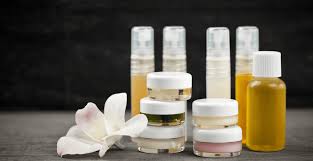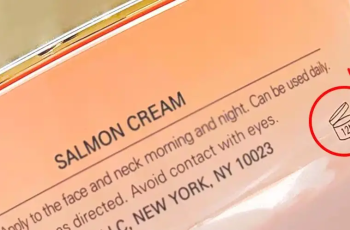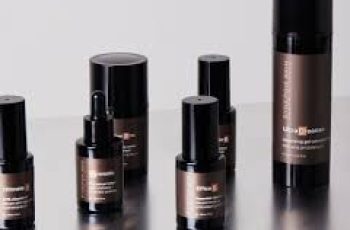
Can You Use Kojic Acid and Azelaic Acid? The Ultimate Skincare Duo
When it comes to skincare, there are some ingredients that are household names—think Vitamin C, retinol, and hyaluronic acid.
But then there are other powerhouse ingredients that remain relatively hidden, despite their incredible benefits. Two such ingredients are kojic acid and azelaic acid.
These acids may not be as famous as others, but they are rapidly gaining popularity in the skincare world due to their incredible effectiveness.
In this blog post, we will explore what these acids do for your skin, how you can use them safely, and whether it’s possible to incorporate both into your daily routine. Let’s dive in!
What is Kojic Acid?
Kojic acid is a lesser-known but highly effective ingredient in the skincare world. Technically, it belongs to the AHA (alpha hydroxy acid) family.
It is a by-product of fermented foods such as soy sauce, sake, and rice wine, and it’s derived from fungi, particularly mushrooms.
This naturally occurring acid has a powerful ability to brighten the skin and tackle pigmentation issues.
Kojic acid works by inhibiting the production of melanin, the pigment responsible for skin color.
By blocking an amino acid called tyrosine, kojic acid can significantly reduce dark spots, age spots, and hyperpigmentation caused by sun damage.
It also helps reduce melasma, which is commonly seen during pregnancy.
In addition to its skin-brightening benefits, kojic acid also possesses antibacterial properties, making it effective in treating acne.
This makes it a solid option for those who are struggling with both acne and pigmentation issues.
However, while kojic acid is highly effective, it can be irritating for some people, especially those with dry or sensitive skin.
It’s important to patch-test before full application to ensure you don’t experience a reaction. Kojic acid is usually found in concentrations of 1% or less in most skincare products.
These products often come in the form of soaps, cleansers, and serums.
For best results, kojic acid should be used occasionally. Since it doesn’t absorb deeply into the skin, its effectiveness diminishes over time if used for prolonged periods.
For rinse-off products like cleansers or soaps, kojic acid should only be left on the skin for a few minutes, while leave-on formulations should be used sparingly.
What is Azelaic Acid?
Azelaic acid is another underrated skincare gem that offers numerous benefits, particularly for those struggling with acne, uneven skin texture, or hyperpigmentation.
Unlike kojic acid, azelaic acid is derived from natural sources like barley, rye, and wheat. This dicarboxylic acid has multiple properties that can greatly improve the appearance and health of your skin.
Azelaic acid is best known for its antibacterial, anti-inflammatory, and antioxidant properties. It works by helping to clear clogged pores, reducing acne-causing bacteria, and calming inflamed skin.
It’s effective at preventing the buildup of dead skin cells, dirt, and oil, which can lead to acne and blemishes.
What’s more, azelaic acid is milder than many other acids, making it suitable for those with sensitive skin.
It has become particularly popular among people with darker skin tones because it helps target pigmented spots without increasing the risk of irritation or sensitivity.
For those with hyperpigmentation or melasma, azelaic acid can help lighten dark spots over time.
This acid also has gentle exfoliating properties, helping to dissolve the top layer of dead skin cells, revealing brighter, smoother skin.
Azelaic acid is usually found in products like creams, gels, and serums.
It can be used daily without the risk of over-exfoliation, as it is more gentle on the skin than stronger acids like glycolic or salicylic acid.
Can Kojic Acid and Azelaic Acid Be Used Together?
The short answer is: Yes, but with caution.
Kojic acid and azelaic acid both have skin-brightening and pigmentation-reducing properties, making them an appealing combination for those who want to tackle uneven skin tone, dark spots, and acne.
However, both are acids, and using them together can irritate the skin, especially if applied too frequently or in high concentrations.
Both kojic acid and azelaic acid have similar pH levels, which means they can alter your skin’s natural acidity. This can lead to skin irritation, increased sensitivity, and a weakened skin barrier.
Therefore, it’s crucial to use these acids properly and avoid overuse. Here are a few tips for using kojic acid and azelaic acid together:
How to Safely Use Kojic Acid and Azelaic Acid Together
1. Allow 30 Minutes Between Applications
When using both kojic and azelaic acid, the best practice is to wait at least 30 minutes between applications.
This allows your skin to stabilize and gives the acids time to work without overwhelming your skin. By spacing out the two, you reduce the risk of irritation and allow each acid to deliver its full benefits.
2. Alternate Days
If you want to avoid irritation, consider using each acid on different days. For example, you could apply kojic acid on one day and azelaic acid the next.
Alternating between the two will help minimize irritation while still providing the benefits of both acids.
3. Use Them at Different Times of the Day
Another option is to use one acid in your morning routine and the other in your nighttime routine.
For instance, you could apply azelaic acid in the morning, as it’s gentler and can help brighten your complexion throughout the day.
Then, use kojic acid in the evening, as it works best at night and is less likely to cause irritation when not exposed to UV rays.
If you decide to follow this route, make sure to apply SPF during the day when using azelaic acid. Sun exposure can worsen pigmentation, and it’s crucial to protect your skin from UV damage.
Is Kojic Acid an AHA?
Yes, kojic acid is technically classified as an alpha hydroxy acid (AHA), although it’s not as widely known as other AHAs like glycolic acid or lactic acid.
Like other AHAs, kojic acid works by exfoliating the skin’s surface, removing dead skin cells and debris to reveal fresher, more vibrant skin.
It also helps unclog pores and clear up bacterial buildup, which contributes to clearer skin and fewer breakouts.
The key difference between kojic acid and other AHAs is that kojic acid inhibits melanin production, making it particularly effective for brightening the skin and targeting dark spots and hyperpigmentation.
However, as mentioned earlier, kojic acid can cause irritation, especially for those with sensitive skin, so it’s crucial to apply it carefully.
Final Thoughts
Both kojic acid and azelaic acid are fantastic skincare ingredients, offering impressive benefits like reducing hyperpigmentation, treating acne, and improving overall skin texture.
However, when used together, they can cause irritation if not properly applied.
To safely incorporate both into your routine, space out their usage, alternate days, or apply them at different times of the day.
Always remember to patch-test before applying new products to your face, especially if you have sensitive skin.
As with any new skincare ingredient, it’s wise to consult a dermatologist or doctor before introducing both kojic and azelaic acid to your routine.
They can provide personalized guidance and help you achieve the best results without compromising the health of your skin.
Feel free to reach out if you have any questions or concerns. For more skincare tips, updates, and product recommendations, follow us on Instagram!



